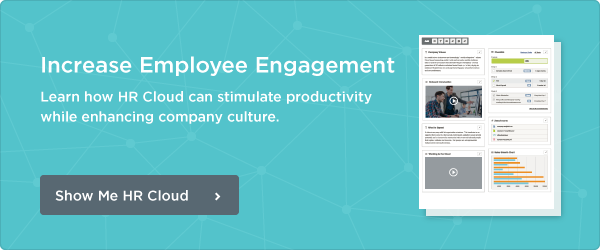How to Increase Engagement by Increasing Business Literacy


 Cut onboarding time
by 60%—here's the
Ultimate Checklist
that helped do it.
Cut onboarding time
by 60%—here's the
Ultimate Checklist
that helped do it.

We’ve all heard of the Gallup Q12 Employee Engagement Survey. The 12 indicators are an easy way to get a pulse on employee engagement. But are these indicators sufficient? Maybe there’s more to it…
An article by Gary Sheard says that business literacy is important to increasing employee engagement. Here’s Gary’s logic. Make sure employees understand the lingo of business and what it means to the company. Ya know… things like revenue, margin, cash flow, etc. By developing this capability in people, he argues, you better develop the business. Makes sense, right?
Here’s how he puts it. “The better informed that the employees are, the more probable they will come up with the same answers as management. Therefore, it follows that the more they can understand you, the better educated that they are in all aspects of business, then the better quality of: answers, engagement, and commitment to the common cause.”
In many ways having the information needed to do one’s job is like that Gallup Q12 indicator, “I have the materials and equipment I need to do my work right.” You could say that information and knowledge are perhaps the most important materials of all.
So what can we do to ensure our employees build their business literacy? What kind of knowledge is needed to ensure individual effectiveness and maximize contributions to business success? And how, exactly, can HR promote this initiative?
Tweet: What can we do to ensure our employees build their business literacy? @HRCloud
In the Beginning
We know by now that the onboarding process begins before an employee’s first day on the job and extends well beyond those first 8 hours. Onboarding starts as soon as an applicant accepts the job offer and may last for several months as the new staff member receives clarification, is socialized to the company culture, and establishes the relationships they need for success.
During this onboarding phase, HR professionals can
1. Ensure that employees learn about the business,
2. Gain clarity around their specific role,
3. Understand the day-to-day expectations for their job, and
4. Develop a line-of-sight from individual performance to business performance.
Cultural Literacy
Recognizing and rewarding desired behaviors reinforces company culture (norms, behaviors and traditions). It also educates team members about the company’s mission, vision, and values. Training programs and materials can look backwards in order to build a bridge to the future. Learning the history of the company can make it easier for employees to envision the future as well as deepen their understanding of how they can contribute.
Access to Information
One of the greatest obstacles employees can encounter is the inability to find the information or people who can help them. Sometimes this occurs because resources are spread across departments, divisions, or geographies. Occasionally, it’s due to a lack of sufficient internal networks to connect people. Human resources professionals can lead the movement to connect people to people and people to information by using technology that provides for interactive social collaboration. In addition, technologies that enable the virtual storage of documents, FAQs, industry-specific materials, and training resources (even video!) will allow employees to find what they need quickly and efficiently.
Organizational Literacy
Executive leadership teams in most organizations spend a ton of time devising operational plans and strategic plans. Embedded within these planning documents is information about what’s important today and what’s needed for the future.
Does the company strive for quality and minimizing defects? What is the outlook for innovation? Are there goals for increasing market share and how will that measured? How will success be defined in 3 years? 5 years? It’s important that these ‘plans’ come down off the CEO’s bookshelf and the information be shared with employees so each individual can connect their job to the overall goals for the business.
Building literacy—business literacy—in employees may be the single most important thing we do as human resources professionals and managers.
Tweet: Building business literacy may be the single most important thing we do as HR pros @HRCloud
We hire people, presumably, who have the baseline KSAs and competencies to perform the job they’ve been hired for. But when we connect them to knowledge of our unique business we have the opportunity to deepen their understanding, commitment, and engagement.

Keep Reading
Top 10 Best Employee Engagement Software
An employee engagement platform acts as a hub for the daily or other periodic rituals of
How to Improve Employee Engagement in Healthcare: 9 Simple Things to Start Doing Today
Improving employee engagement in healthcare teams directly impacts the level of care
Employee Engagement Best Practices: The Dos and Don’ts (Free Manager Checklist Inside)
If you follow the right employee engagement best practices, that can turn engagement
Like What You Hear?
We'd love to chat with you more about how HR Cloud® can support your business's HR needs. Book Your Free Demo

Build a Culture of Recognition. Boost Engagement. Guaranteed.
Workmates empowers employees to stay informed, connected, and appreciated—whether they’re on the front line, in the office, or remote. Recognition drives 12x higher engagement.Trusted by industry leaders in every sector




Cut Onboarding Costs by 60%.
Take the confusion and follow-ups out of onboarding with automated workflows, digital forms, and structured portals—so new hires ramp faster 3X quicker.Trusted by industry leaders in every sector





